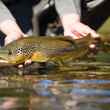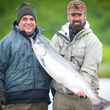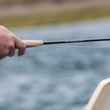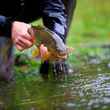In our Best Fishing Sunglasses of 2013 feature, we sang the praises of Smith's new ChromaPOP lenses, introduced late in 2013. Since that time, we've continued dragging along our favorites of the ChromaPOP lineup along on all manner of watery excursions, and this relatively new technology from Smith has continued to impress everyone we've shared it with. So, we were considerably pleased to learn of Smith's announcement from yesterday which introduces two new ChromaPOP lenses -- the ChromaPOP Polarized Brown Mirror and Polarized Blue Mirror -- both designed specifically with fishing in mind.
And yes, we're well aware that we've beaten the anglers-need-good-eyewear message to the point of dead horse status, but we're going to keep talking about it. For one, it remains crucial to an angler success. Plus, we like it.





























